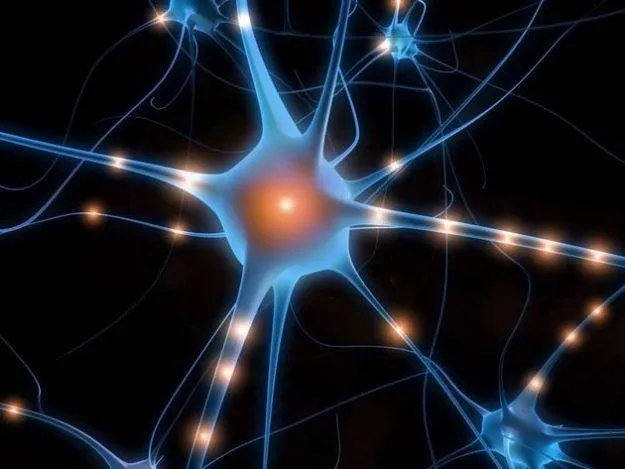Obesity is a chronic epidemic tendency disease in the western world.In Spain, the prevalence of obesity is 22.9%.
Despite the efforts aimed at the prevention and treatment of obesity and type 2 diabetes, its prevalence has grown at an alarming rate worldwide during the last years.
The departure of traditional patterns of healthy eating, the deficit of consumption of fruits and vegetables etc., the decrease in physical activity and the increase of sedentary lifestyle, are among others, some of the known causes of this increase.But in addition, there is evidence that shows that the consumption of an unhealthy diet has an impact on fat and blood sugars that reach the brain through blood vessels.
Brain circuits control body weight, food intake and energy balance.Until now, his study has focused on neurons ignoring the presence and role of astrocytes.Astrocytes are historically known glial cells for serving as a bonding support for neurons (GLUE), but also their presence is essential for a correct neuronal function in addition to being located in the first line of access to nutrients in the brain.
Although its study has been ignored for years, recent studies have shown that attrocys, like neurons, are able to respond to circulating factors (lipids, sugar, hormones), known for regulating energy metabolism, actively participatingin the transport of them in the brain and cooperating with neurons to regulate, efficiently, the weight and consumption of food.
According to Dr. Cristina García Cáceres, group head at the Institute of Diabetes and Obesity in Helmholtz Zentrum München, Munich, Germany), “The last findings suggest that astrocytes are actively involved in the control of energy metabolism and are outlined as possibletargets for approach in the treatment of obesity and type 2 diabetes ”.

Astrocytes are located in the first line of access to nutrients in the brain since they interact with micro-vesses-cerebral forming the neurovascular unit responsible for regulating the permeability of blood vessels.Therefore, Dr. García Cáceres points out that “it is not surprising that these cells are directly influenced by nutritional variations derived from an unhealthy diet, such as excess of fats and sugars in the blood, being able to affect their functionality toThe time to inform neurons responsible for maintaining a correct balance between intake and energy expenditure. ”
In this sense, this expert points out that the current challenge is in "investigating how astrocytes communicate with neurons regulating their activity and functionality in the control of energy metabolism."
physical exercise in the treatment of diabetes mellitus
The benefits of regular physical exercise are numerous, from the decrease in cardiovascular mortality to the improvement of the quality of life of the general population and, in particular, that of patients with diabetes.
However, Dr. Ana Novials, director of the Diabetes and Obesity Research Laboratory of IDIBAPS-HOSPITAL CLINIC, explains that the relationship of physical activity with glycemic control is something controversial: “While in patients with type 2 diabetesA greater load of physical exercise is associated with a remarkable improvement of blood glucose levels, in type 1 diabetes studies show disparate data;since this beneficial effectIt will also depend on the correct adaptation of the insulin doses or the consumption of carbohydrates that patients perform ”.
In any case, the success of a specific exercise program will depend largely on a correct prescription.First of all, the type of exercise will be tried to the individual characteristics of each patient.It is advisable to design programs that include both aerobic exercises and exercises for the work of muscle strength, controlling parameters as intensity, duration or weekly frequency to which the activity should be carried out.
In addition, Dr. Novials points out that “at the time of prescription, the existence of diabetes complications must be taken into account, which could limit or change the normal performance of a certain activity, modifying the council until adapting it to the possibilitiesreal of each patient.Finally, the prescription of exercise must be accompanied by recommendations to properly adapt the treatment of diabetes ”.
alternatives to approach to obesity
The approach to obesity must be multidisciplinary, always pursuing long -term goals, and focusing on a change in both food and physical activity.Currently, there are many obese patients who do not respond to conventional treatments through diet and with an indication of bariatric surgery who cannot or do not want to undergo such surgery and look for another alternative such as bariatric endoscopy.
According to Dr. Immaculate Bautista, a doctor responsible for the Monitoring Unit and the Research Unit of the Bariatric Endoscopy Department of the HM Sanchinarro University Hospital (Madrid), the profile of patients indicated for this technique “are people with obesity degrees 1 or2 (BMI 30-40 kg/m2), with an average age of 35-40 years that you have tried numerous occasions to lose weight with conventional treatments without achieving it, and that are not in a position to lose weight by their own means.Patients describe to be at a point "without return", where after an important effort they get 5-10 kg, they get tired, leave the diet and recover the lost and even more weight. "
"There are also patients with greater degree obesity (BMI & GT; 40 kg/m2) who does not want to undergo bariatric surgery interventions, due to the risk they perceive of it, and want to try with less invasive techniques," adds Dr. Bautista.
These techniques must be carried out by expert personnel in their management and in a hospital environment where possible complications can be resolved.In addition, it is essential that they be carried out in the surroundings of a multidisciplinary team, with experts in nutrition, psychologists who help in the change of habits and physical activity advisors.
"The weight loss, once achieved with the help of the endoscopic technique, is maintained to the extent that the follow -up team manages to change the food and physical activity habits, as in the restrictive surgical techniques,"Dr. Bautista concludes.


